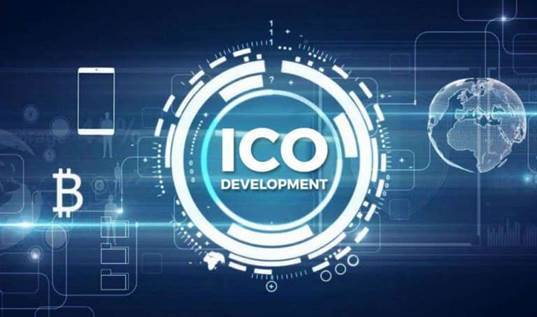What Are The Levels Of Group Development? 2024
Eric Douglas is the senior partner and founding father of Leading Resources Inc., a consulting agency that focuses on creating high-performing organizations. For greater than 20 years, Eric has successfully helped a massive selection of presidency agencies, nonprofit organizations, and companies achieve breakthroughs in performance. His new e-book The Leadership Equation helps leaders achieve strategic readability, handle change effectively, and construct a management tradition. The leader should give attention to her or his position as a facilitator and trust-builder.

All teams should undergo the initial four levels to be able to turn out to be productive and deliver outcomes. The organisational environment the model new team exists in can be unfamiliar to its members. The managers should introduce the group to its stakeholders and explain its dependencies and its place within the organisation. This feedback is never shared publicly, we’ll use it to level out better contributions to everyone. Mark contributions as unhelpful when you find them irrelevant or not valuable to the article. This suggestions is private to you and won’t be shared publicly.
Behavior of the swarms is means better to be seen as they transfer together If the process is applied to the team it’s going to act and give higher output. When forming a staff, leaders need to build trust, set expectations and encourage involvement. You wish to develop a eager sense of belonging in every member. Creating a group charter is a superb software to help your team, as is conducting completely different kinds of “get to know you” activities.
The Second Stage: “storming”
With a clear communication plan in place, your team will know the way to talk about their points with the relaxation of the group in a constructive manner. The first stage of group growth is the forming stage. In this stage of group development, individual members are just getting to know one another and don’t have a group course of yet. As a outcome, they’re unsure of how they’re going to work together together.
Without sturdy management, teams could struggle reaching the performing stage. By creating your individual leadership expertise, you’ll have the ability to model collaboration best practices and assist your staff attain their fullest potential. As you build a brand new group, hold the stages of group growth in thoughts so you’ll find a way to help particular person group members reach their full potential and collaborate together successfully. While there’s nobody proper approach to assist your team, try these 4 methods to spice up your team’s cohesiveness.
Group members may compete with one another for areas of duty and/or particular duties. There can be battle in regards to the objectives and objectives of the project (or startup). For those group members who have beforehand worked together, formerly unresolved points could even arise. Some conflict can be good as it can help work via points, in addition to decide whether or not or not the group will have the power to work collectively. Ultimately, the group needs to realize clarity by working via its major issues, which allows them to move ahead into the following stage. The leader’s function in group constructing during this stage is a major one.
As a new project section begins new groups are shaped and the members will go through the stages. New staff members becoming a member of established teams will go through a very private version of the stages as they settle in. Engineering administration, management, software architecture, high-performing teams, professional progress. At this stage, the team’s routine and norms become stable and change occasionally. The team might start considering strategically about their work and balance work on initiatives and process improvements. The roles and limits are typically unclear at the Storming stage.
White-fairhurst Tpr Model
Bear in mind that, in some cases, you may need to reform and relaunch a long-standing team to reap the benefits of all 4 Tuckman phases. And to be clear, the Tuckman mannequin is simply one means of taking a glance at group growth. Whatever the name or kind may be, each staff begins somewhere. And its success or failure very a lot hinges on the information and skill of its management. When leaders allow groups to form and develop with unrealistic expectations or too little oversight, dangerous things can occur.
The group groups like concepts together and define their prime 5 concepts. Chris can see the release of inventive energy within the room. She explains that every one is effective because it can lead to another, better thought. They decide how communication ought to take place between meetings. Chris emphasizes the significance of attendance and that every member’s enter is significant. Here’s an instance of the four levels as they performed out at a big public hospital.

Managers must help every staff member and ensure they can contribute and their peers aren’t blocking them. Frequent 1–1s enable managers to help their staff members address points and find a place in the staff. During the Norming stage, the leader should proceed to encourage members to share their opinions, even when they disagree. Because this stage immediately follows Storming, members may be much less inclined to express their opinions if they concern more conflict.
Genius Or Improvement Culture? What Do They Imply And Which Is Best?
During this stage, it’s essential to write down down targets and assignments to remove ambiguity. It’s additionally essential to carry regular standing checks, to evaluate progress, decide the place individuals are caught, provide help, and provides regular efficient suggestions. For the chief, it’s equally essential to ask for feedback and show openness to receiving it, acknowledging its value, and acting https://www.globalcloudteam.com/ on it. You may nonetheless should put out the occasional fireplace, but on high-performing teams, leaders can generally concentrate on monitoring progress, measuring outcomes and celebrating achievements. Helpful tools embrace having the best know-how and correct metrics to measure team performance—as nicely as understanding tips on how to throw a good get together.
- It’s upon reaching this stage that a team can turn into excessive performing.
- You would possibly nonetheless have to put out the occasional hearth, however on high-performing teams, leaders can typically concentrate on monitoring progress, measuring outcomes and celebrating achievements.
- At this stage, it turns into important for the leader to acknowledge superstars and rock stars (as outlined in my previous article—read here) utilizing the suitable strategies with every profile.
- Group members could have a hard time working with different teams as they’d strong group dynamics with their earlier group.
- The group might start pondering strategically about their work and stability work on initiatives and course of enhancements.
- In this stage, staff members are within the strategy of learning the means to work together.
Some teams manage to keep away from this stage, however normally provided that the groups are deliberate in preventing problems before they arise. Teams can do that by way of creating an open and honest setting the place everyone appears to be respected. However, some teams expertise such a strong Storming stage that they’re unable to maneuver previous it. The key to shifting through this stage is to make issues so easy as potential. Hopefully, your team’s function or desired end result is known by this point. Now it’s time to verify everyone understands the incremental milestones on the greatest way to your objective, and what their role is in serving to the group get there.
If that is the case, the chief might must step in to help the staff through these changes. However, typically, the chief is extra concerned with delegating and overseeing the method during this stage. Note that groups can lapse back into earlier phases when modifications occur with personnel or the project itself. Ideally, the end of this section is the successful completion of the project. The staff, which can doubtlessly stay the same in a smaller firm or startup, can now move on to the following project. As the name implies, the Storming stage of staff growth includes some conflict.
At this stage, it turns into essential for the leader to acknowledge superstars and rock stars (as defined in my previous article—read here) utilizing the suitable strategies with every profile. In addition, delegating and creating new targets are anticipated from a pacesetter. More tough than successful a sport is successful consecutively and adapting the team to new challenges. It is subsequently widespread for a successful leader to rejoice a objective achievement fleetingly, as his focus moves onto the following challenge in an effort to prolong this stage of performing. As with all the stages you will need to acknowledge that forming occurs whenever a new team is created. In a typical Rizing engagement teams are formed and dissolved throughout the project lifecycle hence the ongoing want to provide management and guidance.
Be intentional about teaming and you’ll go farther, quicker. Pose lots of questions to your staff, even if you assume you understand the reply. Take a cue from the Atlassian Team Playbook and find time for these three activities.
Tuckman’s Stages Of Group Improvement
Remove obstacles by coordinating tightly with adjacent and upstream teams. Validate your assumptions about what your customers want, then proactively decide what you’re not doing proper now so you don’t get distracted. When you begin to sense that the left hand knows 4 phases of team development what the right hand is doing, you’ve made it into the “norming” stage. The challenge now could be to maneuver a bit quicker while preserving the standard of your work excessive.

Alasdair A. K. White collectively together with his colleague, John Fairhurst, examined Tuckman’s growth sequence when developing the White-Fairhurst TPR model. They simplify the sequence and group the forming-storming-norming levels together because the “remodeling” section, which they equate with the preliminary performance level. This is then followed by a “performing” part that results in a brand new efficiency stage which they name the “reforming” section. It’s upon reaching this stage that a group can turn into excessive performing.
